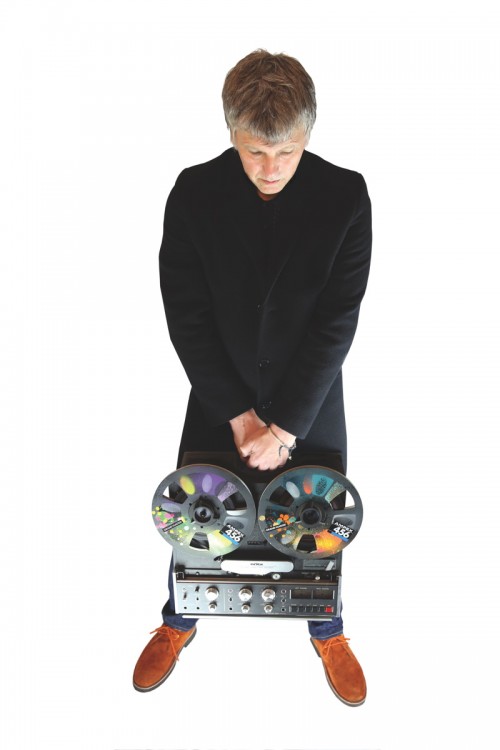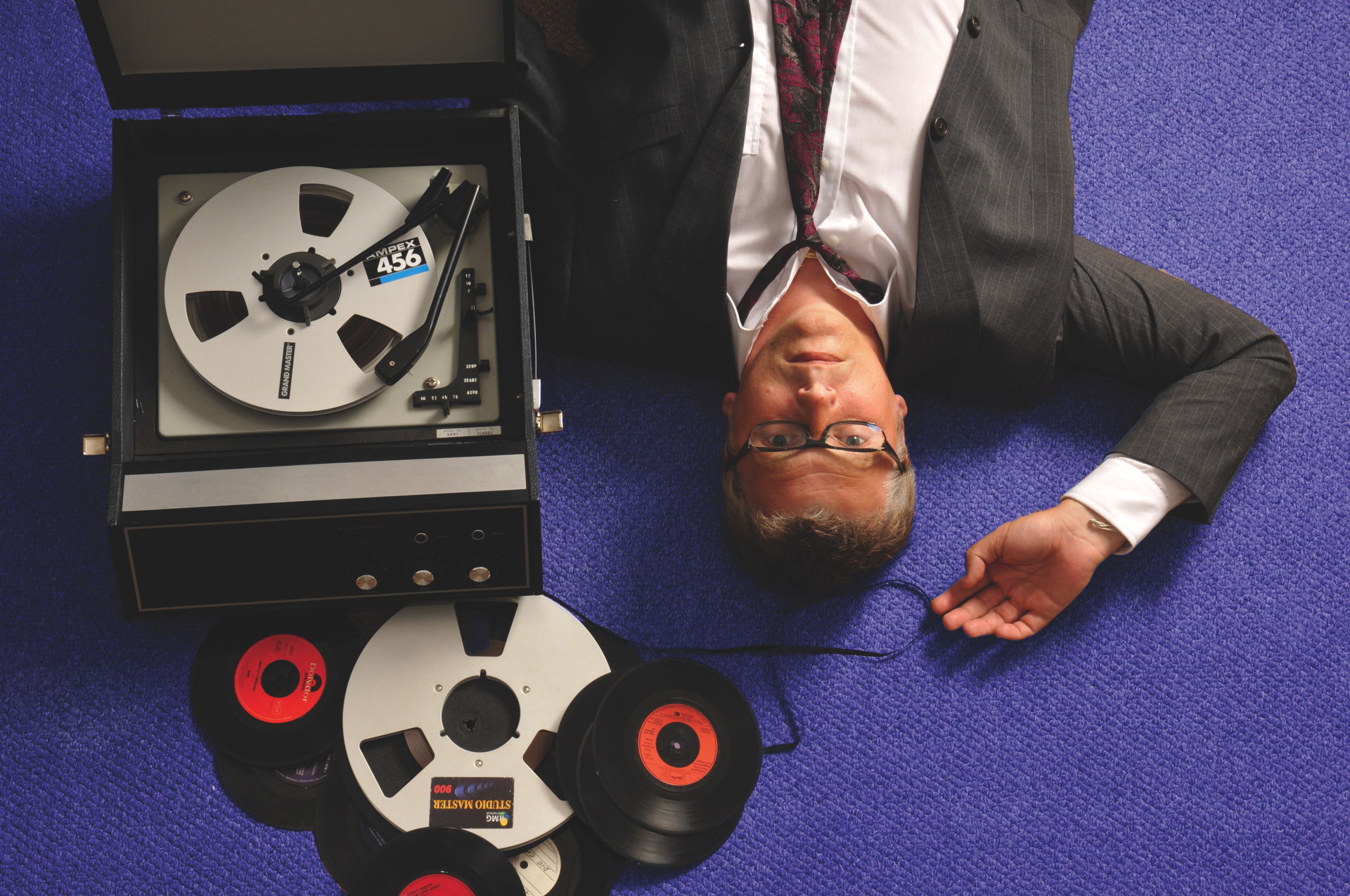Back in the mix
Merseyside DJ legend Greg Wilson tells Sean Smith about the history of black music in the north
As much as Greg Wilson is excited about DJing a big, open-air gig on the Pier Head in his home town of Liverpool – and he’s clearly thrilled – you also get the impression that he’s every bit as excited about the chance to talk about the ideas behind his involvement with the Very Big After Party.
Transatlantic 175 is a commemoration of 175 years of passenger travel across the Atlantic, taking place on Liverpool’s waterfront and docks next month. Saturday 4 July brings the Very Big Catwalk, an attempt to break the world record for most models on a catwalk, followed by the veteran DJ Wilson doing his stuff for the assorted fashion divas at the Very Big After Party. Wilson was brought in by Wayne Hemingway (whose Vintage Festival is also at the dock over the weekend), with a brief to highlight the musical connections between Liverpool and the US.
The perceived wisdom is that it all started with the Cunard Yanks, the merchant seamen who went to New York and took the music, the clothes, even the mannerisms they found back to Liverpool, planting the seeds that would eventually grow into the Beatles and Merseybeat. A young George Harrison, for example, bought a black Gretsch guitar from a Cunard Yank fresh off the boat from New York.
“That’s not half the story, even though it’s massively important,” says Wilson over a teacake in a restaurant on the seafront in New Brighton. “Bob Wooler, the DJ at the Cavern, told me that he got his records from everywhere – it wasn’t just about the Cunard Yanks. He told me he used to buy a lot of new American imports from a shop in Newton-le-Willows. That seemed a bit bizarre to me. But it’s next to Burtonwood Airbase. It makes complete sense. They were selling them to the US servicemen.
“Black American servicemen used to come to clubs like the Timepiece in in the 1970s.”
“There’ve been American servicemen in this country since the Second World War. I think that’s one of the reasons why there’s such an affinity with black music. And that scenario plays out in Liverpool as much as anywhere else. Black American servicemen used to come to clubs like the Timepiece in Liverpool in the 1970s. And at the same time, it was always a cosmopolitan city. It was a melting pot for ideas.”
Wilson started DJing in a club around the corner from his parents’ pub in New Brighton in 1975. After the best part of 40 years as a professional obsessive, he has an encyclopaedic knowledge of the music he grew up with. He tells me that Merseybeat historian Spencer Leigh and Wooler put together a list of all the tracks by Liverpool artists between 1962 and 1967 and discovered that some 60 per cent of the city’s output was made up of cover versions of black American artists like Little Richard, Chuck Berry, Arthur Alexander and Smokey Robinson.
While most people “wouldn’t have a clue” how important black American culture has been to Liverpool over the years, it’s something Wilson feels “very strongly” about highlighting.
“All the bands that came out of here in the 1960s were indebted to that music. Before the Beatles exploded on the UK scene, compared to other parts of the country, Liverpool would have seemed to be very behind the times. The city hadn’t embraced what was then popular culture – Cliff Richard, Adam Faith, those kind of more clean-cut artists. In Liverpool they were hanging on to rock ’n’ roll, the music of five years before.
“The Beatles managed to morph that music into something original. And that was then exported back to America, and they put their own twist on that again.”
A decade later, another Liverpool act who were similarly inspired by the music of black America were the Toxteth funk and soul act The Real Thing, but their fortunes were very different to the Beatles.
“They were very undervalued,” decides Wilson. “There was a snobbery about black music from this country at the time, even from black music aficionados. They had a few hit singles but their second album, Four from Eight, was commercial suicide. That had Children of the Ghetto on it, which is now almost a standard, but when it was released it was a huge flop.”
Within the city there was “always an aspect of racism getting in the way”
Wilson says that although Liverpool benefitted greatly from black American culture, within the city there was “always an aspect of racism getting in the way. Certainly in the 1970s, people could go to the Timepiece and a few other places in the city centre, but you could go the next week and not be able to get in those other clubs purely because of your skin colour. It was quite blatant back then. But people managed to work around it. I think it all went wrong, in a big way, after the riots because it closed that avenue off.”
In truth, this shameful situation was hardly unique to Liverpool but, as a professional DJ playing to a predominantly black crowd, having the majority of his audience barred from his venue was simply untenable for Wilson.
“I ended up in Manchester. In the 1980s, Manchester was the cosmopolitan city, where all this new black music out of New York was really starting to make its mark,” he remembers. “There was a mix of black and white people. And sadly, we didn’t have that in Liverpool.”
Wilson played cutting-edge jazz funk to a clued-up multi-racial crowd at Wigan Pier and Legend in Manchester, often mixing up two copies of the same record to create a unique live remix of the original (which he demonstrated on Channel 4’s The Tube, becoming the first DJ to mix on British TV).
“I might have been playing a track on import for six weeks. Once it’s released in Britain, on the scene I was in, which was very specialist, that’s when its days are numbered. If it’s going up the charts, it’s not going to be played. I’d play around with it and make a different version to get another few weeks out of it.”

Wilson was voted Blues & Soul magazine’s DJ of the year in 1983, with Legend and Wigan Pier at number one and two in the club poll. He went on to champion the new sound of electro, which blended synthesisers and drum machines, and even, via a short-lived residency at the Haçienda, ended up teaching a young Quentin Cook (aka Fatboy Slim) how to scratch records.
He retired as a DJ that year, at the ripe old age of 23. In part, this was about the scene moving on and Wilson not feeling he could move with it.
“There was a slight egotistical thing too,” he admits. “There’d been a DJ on the black music scene called John Grant, who used to work with Colin Curtis at Rafters. He’d been huge and he just went to work as a harbour master in Southampton – it shows you what the career curve of a DJ was back then – and he vanished. He went out on top. He was like an undefeated boxer. And there was something about that that appealed.”
Wilson went on to manage a breakdance crew he’d met at Legend, Breaking Glass, before managing the Ruthless Rap Assassins. His time in this area of the music industry was, he says, “a real rollercoaster”.
“It’s a very fragile world,” he reflects. “There can be good times but there can be really hard times too. I’ve been through the times of looking down the back of the sofa for 50p. And I’m really glad I went through that, because it adds a bit of humility that maybe wasn’t there before.”
By the start of the 1990s, he was, he says, “punch drunk” from working on projects for years only for them to fall apart because someone left the record label. He spent five years caring for his young son while his wife went to work, and largely withdrew from the world he’d spent much of his adult life in.
Eventually, he started to get the feeling that he wanted to “re-engage”. In the decade since, Wilson has established himself as a fixture on the festival circuit and something of an elder statesmen of British club culture, whose re-emergence coincided with the tendency to re-examine the roots of the music that has soundtracked our lives over much of the last four decades. He explores these ideas at www.gregwilson.co.uk.
Clad in Adidas from head to toe, with his mane of grey hair and a gleam in his eyes, Wilson is still recognisable as the confident young lad showing Jools Holland – and all the rest of us too – how to mix records all those years ago. His enthusiasm is just as infectious.
“I love the connections, the richness of the tapestry of culture that surrounds us. I love the fact that records have a story, and they connect with each other in ways that you couldn’t even imagine.
“That’s what I’m all about, putting these connections together. It gives you an insight into patterns and how things develop.
“I went to the site the other day and looked up and saw the Royal Liver Building there and thought, this is the place, this is the spot,” he says with a wide grin.
“It’s like playing by the Eiffel Tower or the Statue of Liberty. It’s an absolutely iconic place. It’s where people sailed off from or sailed into.
“It’s a dream setting, especially for someone from Merseyside. Telling this story and making these connections in this context is a really special thing.”
See www.cultureliverpool.co.uk for details of Transatlantic 175 events.
Main photo: Ian Tilton

Leave a reply
Your email address will not be published.